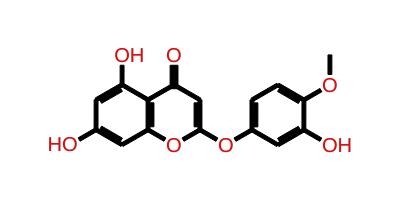- Resources
Recent Activities
Plants Gallery
Downloads
Worldwide, there are plants known as psychoactive plants that naturally contain psychedelic active components. They have a high concentration of neuroprotective substances that can interact with the nervous system to produce psychedelic effects. Despite these plants' hazardous potential, recreational use of them is on the rise because of their psychoactive properties. Early neuroscience studies relied heavily on psychoactive plants and plant natural products (NPs), and both recreational and hazardous NPs have contributed significantly to the understanding of almost all neurotransmitter systems. Worldwide, there are many plants that contain psychoactive properties, and people have been using them for ages. Psychoactive plant compounds may significantly alter how people perceive the world.
Compound Summary
CAS ID |
138079-63-7 |
||
INCHI KEY |
QTRKHMNULYYBDM-UHFFFAOYSA-N |
||
MOLECULAR WEIGHT |
316.27 |
||
MOLECULAR FORMULA |
C16H12O7 |
||
MOLECULAR MASS |
316.265 |
||
BIOLOGICAL SOURCE |
Mimosa tenuiflora |
||
DATA SOURCE |
Dictionary of Natural Product. http://dnp.chemnetbase.com. .; Pubmed; Pubchem; Amariz IAE, Pereira ECV, Alencar Filho JMT, Silva JPD, Souza NAC, de Oliveira AP, Rolim LA, Pereira RN. Chemical study of Mimosa tenuiflora barks. Nat Prod Res. 2022 Apr;36(7):1893-1897. doi: 10.1080/14786419.2020.1813135. Epub 2020 Sep 14. PMID: 32924595 | ||
CHEMICAL CLASS OF COMPOUND |
Coumarins and derivatives |
||
NLRP3 DOCKING SCORE(Kcal/mol) |
-7.194 |
||
CANONICAL SMILES COc1ccc(Oc2cc(=O)c3c(O)cc(O)cc3o2)cc1O
|
|||
BIOACTIVITY REPORTED FOR NEURODEGENERATIVE DISEASES
No
|
|||
SYNONYMS |
5,7-Dihydroxy-2-(3-hydroxy-4-methoxyphenoxy)chromone, Tenuiflorin C |
||
